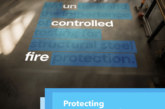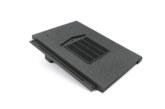The use of RAAC is likely to be widespread, affecting many buildings constructed between the 1950s and 1990s. Building owners with defective RAAC are likely to look to their insurers. And as with defective cladding, they may quickly find RAAC-related claims are excluded in future policy years.
Greg Carter, a Legal Director and Construction and Insurance Law Specialist at Winckworth Sherwood commented: “Building owners may struggle to bring claims against suppliers of RAAC and construction firms or other such parties that specified its use. Assuming those businesses are still operating, the timeframe for claims will in many cases have long expired. Yet building insurance may hold an answer — at least for now.
“Owners of buildings which contain RAAC should check as a matter of urgency whether they hold building or other forms of insurance that open potential claims for the cost of rectifying or mitigating RAAC and for losses associated with its use.
“All insurance policies are different, and they will have their own ‘triggers’ as to when a claim can be made. But if RAAC is found and is judged to be defective or potentially defective, this may well be enough to warrant a notification to insurers. Potential claims need to be properly notified to insurers with the lifetime of the policy — usually one year.
“Whilst the extent of RAAC is not yet known, there is a reasonable suspicion that it is widespread, and there is every chance that insurers may seek to exclude claims for or arising from the presence of RAAC in future policy years.
“Put bluntly, whilst a building owner’s current insurance might include cover for RAAC claims when that policy comes to an end and/or is renewed, insurers may seek to exclude such cover for future claims or circumstances relating to RAAC which are notified in that or later years.
“In addition to investigating the presence of RAAC, building owners should therefore as a matter of some urgency investigate whether their current insurance policies provide cover for RAAC and if so, what the required trigger is for a notification of a claim. If there is any doubt, legal advice should be taken immediately and in good time before the expiry of the current building insurance.”
Header image: ©TATIANA/AdobeStock










